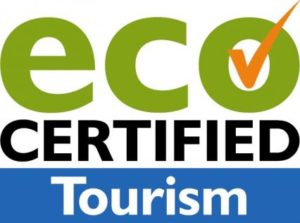
Nearly nine in 10 Americans are expecting to travel this summer. Eight in 10 plan to travel in their personal vehicles and 46 percent plan to fly according to the U.S. Travel Association.
With tourism being responsible for roughly eight percent of the world’s carbon emissions, tourists traveling this summer can rely on some tips to travel more sustainably.
“Traveling sustainably is a big question for travelers. It’s an ideal end goal, but what does it mean?” said David Knight, an assistant professor of tourism management in the Human Dimensions of Natural Resources department in the Warner College of Natural Resources.
“I like to think of it as responsible tourism,” Knight said. “It’s about taking action when we travel to help improve and cultivate our surroundings, rather than focusing on consumption or just leaving things the way we found them. Giving back through regenerative practices like carbon offsetting and honoring destination residents can make a real difference.”
Tourism not only has an effect on the environment, but has impacts on locals, which affects their experiences in their own countries. Considering this piece is another component of responsibility Knight calls social sustainability. “When traveling, there will always be impacts on hosts and their environment,” Knight said.
While tourism has intrinsic carbon output and effects on locals, there are some things tourists can do to minimize those impacts that include economic choices, environmental choices and mindful behaviors. Below are some tips on traveling more responsibly and sustainably this summer.
Spend smart
“When we talk about sustainability, we often think of the three P’s: people, profit and planet,” Knight said. “These basic pillars can help guide our efforts.”
Travelers can choose where to spend their money and direct it towards sustainable companies, goods and services. Knight suggests tourists look for eco-labels, which are labels that can signify a company’s commitment to environmental conscientiousness. The labels can apply to hotels, air travel and other consumer goods.

A full list of international labels can be found at the Ecolabel Index. An example is the Eco Certified Tourism label. The ECO Certification program certifies tourism products such as tours, accommodations and attractions with a primary focus on nature. It assures travelers that certified products are committed to sustainable practices and provides high- quality, nature-based tourism experiences.
For students, there are alternative, meaningful opportunities to take action, such as volunteering on Arbor Day or working with local organizations like Trees Water People or joining a restoration ecology club at CSU to offset their carbon emissions during traveling.
Another option is to forego independent travel in exchange for a certified travel company or tour operator that will help guide tourists to spending with environmental conscientiousness. For example, Knight cites Australia’s Intrepid Travel, the world’s largest eco-certified travel company. Learn more about twelve eco-friendly tour operators here.
For those doing independent travel, simple advice for being eco-conscious is spending locally on companies that are environmentally sustainable and in turn invigorating local economies. “Visit locally-owned businesses that have an emphasis on sustainability in your travels,” Knight said. “This would require some independent research on the tourists’ part.
Be a good guest

“It’s one thing to say, ‘All responsible tourists have to do X, Y and Z;’ but people in the places you’re visiting might see things a little differently,” Knight said. So how does a responsible tourist behave? The answer depends on where you’re going and being aware of what a good guest means to the local community.
Knight recalls a recent study he co-authored called “Responsible tourism in Bangkok, Thailand: Resident perceptions of Chinese tourist behaviour.” This location-specific study analyzed interviews with Thailand’s locals to create a responsible tourism framework.
Using the framework and subsequent survey findings, the researchers found responsible tourism behavior worked on three levels: the economic dimension, the socio-cultural dimension and the environmental dimension. The economic dimension encourages tourists to use local services, facilities and products while practicing philanthropy during their stay. In the study, these behaviors positively impacted the local community’s perception of tourists and impacts on the local economy.
Examples of irresponsible behavior by tourists included dishonoring local customs, ignoring tourism policies, being inconsiderate of resident safety and a lack of cleanliness. To learn more about brushing up on cultural norms, in your trips near and far, check out Study Abroad’s guide to cultural awareness.
Protect your environment
From boat rides to plane flights, souvenirs and lodging, there are many ways tourists’ activities contribute to the earth’s carbon footprint. Most of this footprint is caused by visitors from high-income countries, with U.S. travelers at the top of the list.
As the number of people who can afford to travel grows, so will tourism’s environmental footprint, Knight said. In his study in Thailand and other research he’s done, environmental impacts are seen from tourists’ behavior. In the previously mentioned study, Thailand locals found that Chinese tourists had in some cases wasted water and not recycled during their stay, which locals felt was a waste of precious resources.
“There’s a huge push now to ‘leave no trace’,” Knight said. “It’s a good guiding principle to pick up what you’ve brought and consider the environment as you travel. Ideally, you can leave each place even better than how you found it.” This could include travelers taking on philanthropy, being involved in local efforts to clean up areas and investing in communities, Knight said. He also urges people to see themselves as part of the environment when traveling.
“See yourself as being within this system. From an environmental standpoint, you are part of the environment, not outside of it,” Knight said. “There’s one planet, so let’s take care of it.”